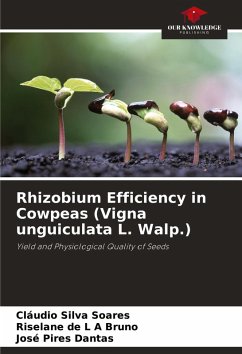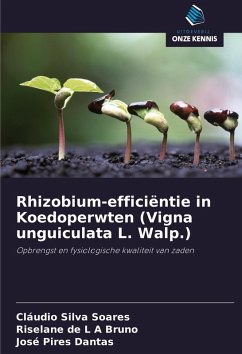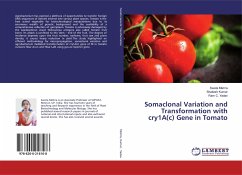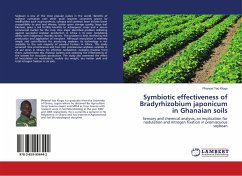
Rhizobium and Agrobacterium in Sustainable Agriculture
The Importance of Bradyrhizobium, Herbaspirillum, Sinorhizobium
Versandkostenfrei!
Versandfertig in 1-2 Wochen
26,99 €
inkl. MwSt.

PAYBACK Punkte
13 °P sammeln!
Rhizobia which are soil bacteria capable of symbiosis with legume plants in root or stem nodules and perform nitrogen fixation for the host. and Rhizobial genera include Agrobacterium, Allorhizobium, Aminobacter, Azorhizobium, Bradyrhizobium, Devosia, Mesorhizobium, Methylobacterium, Microvirga, Ochrobacterum, Phyllobacterium, Rhizobium, Shinella and Ensifer (Sinorhizobium). Rhizobial nodulation symbioses steps are included flavonoid signaling (Flavonoid biosynthesis, flavonoid exudation), Nod factor induction, and Nod factor perception, root hair responses (calcium flux and spiking, gene expr...
Rhizobia which are soil bacteria capable of symbiosis with legume plants in root or stem nodules and perform nitrogen fixation for the host. and Rhizobial genera include Agrobacterium, Allorhizobium, Aminobacter, Azorhizobium, Bradyrhizobium, Devosia, Mesorhizobium, Methylobacterium, Microvirga, Ochrobacterum, Phyllobacterium, Rhizobium, Shinella and Ensifer (Sinorhizobium). Rhizobial nodulation symbioses steps are included flavonoid signaling (Flavonoid biosynthesis, flavonoid exudation), Nod factor induction, and Nod factor perception, root hair responses (calcium flux and spiking, gene expression), rhizobial infection, cell division and formation of nitrogen-fixing nodule. Rhizobium improves sustainable production by boosting organic nitrogen content. In this manuscript, we want to review Rhizobium, Agrobacterium, Bradyrhizobium, Herbaspirillum, and Sinorhizobium.












